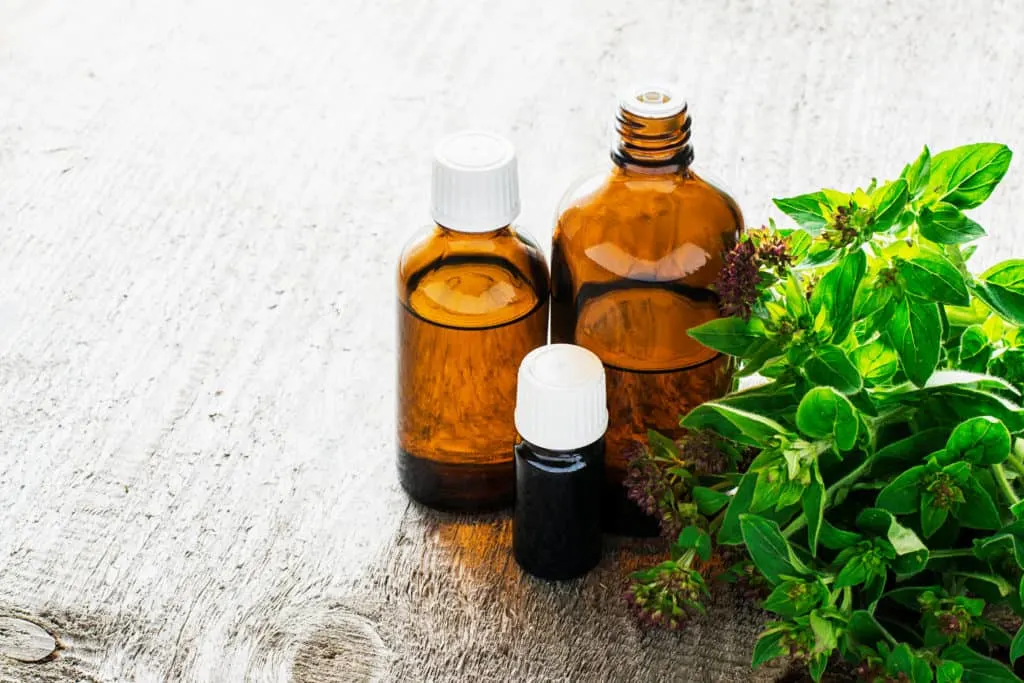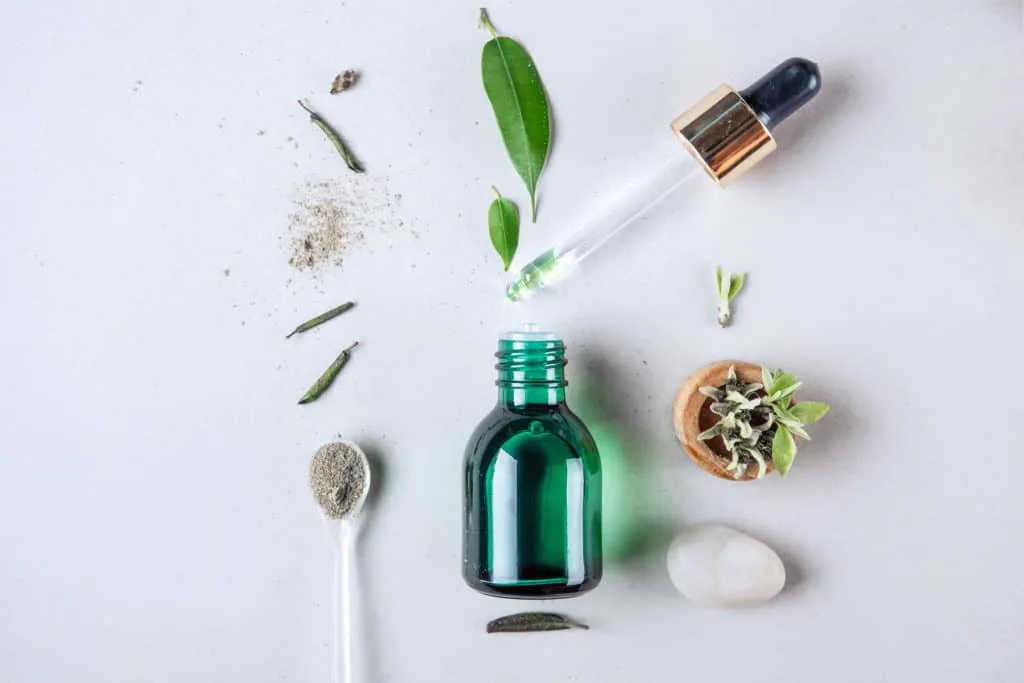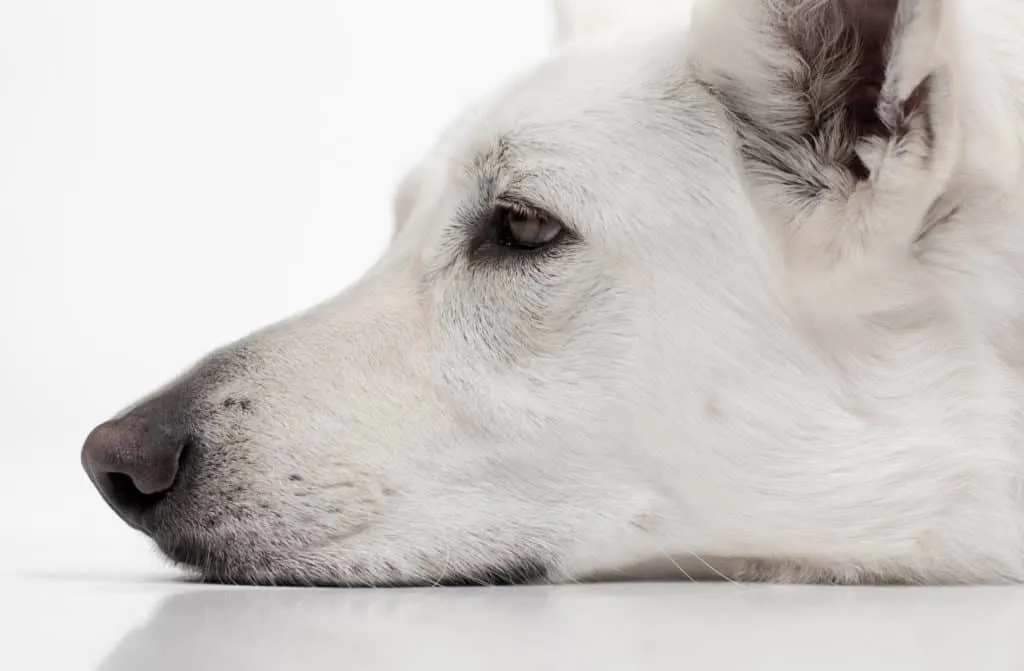
The world of natural and holistic healthcare is growing in popularity and is ever-changing. With aromatherapy being a trending topic in the world of human healthcare, the discussion of its potential benefit in dogs is beginning to be explored as well.
The first question that dog owners usually have when it comes to aromatherapy is – “is aromatherapy bad for dogs?”
Aromatherapy, when properly used, is safe for dogs. However, it is important to follow proper safety guidelines when using essential oils on and around your dog, and to also avoid certain oils known to be harmful to dogs.
Since aromatherapy has become so popular, there is an abundance of information about its usage. With so much content available to research, it can be difficult to decipher quality information from misleading content.
In this article, we’ll dive into the topic of aromatherapy in dogs, how to use this therapy to benefit your pup, and we’ll provide you with detailed safety tips to keep your dog free of complications in the process.
Click Here to Jump to a Section
What Is Aromatherapy?

Aromatherapy is a natural approach to health and wellness by diffusing plant extracts in vapor form in your home.
Aromatherapy, also referred to as essential oil therapy, aims to improve the health of the body and mind in a way that’s free of any unnatural chemicals or medications.
Though aromatherapy was previously seen as an art vs an actual science, it’s beginning to be more accepted in the medical world.
Aromatherapy has been around for thousands of years, and was practiced by ancient Chinese and Egyptian cultures before the use of modern medicine.
These cultures used plant components in several ways, including aromatherapy and topical application of the plant oils.
Though it was originally seen as a potential cure to illness when these cultures first discovered the use of plant oils, it is now seen as an accepted tool to complement modern medicine.
It’s helpful to view aromatherapy as a positive addition to your life rather than an actual treatment to a medical problem. When supplemented into you or your dog’s daily life, you can help to combat minor ailments in a natural way.
What Are Essential Oils?

To understand the use of aromatherapy in dogs, you’ll first need to understand the fundamentals. Since aromatherapy ties hand in hand with essential oils, education on the oils themselves are key.
The term “essential oil” refers to the compounds that are extracted from plants.
By capturing each plant’s oil, it’s a way to capture the unique essence or special quality of each individual plant.
By harvesting the compounds, you can defuse or directly apply the oil to reap the benefits that each plant can offer in terms of health and wellness.
Essential oils are created by either cold pressing or distillation (steaming) of the plant, and then combining the product with a carrier oil that helps to dilute the oil itself.
Though this process may seem basic, it’s an important way to determine the safety of the essential oil you purchase. If the oil is obtained in a way that involves chemicals versus the natural approach listed above, then it is not truly natural.
Is Aromatherapy Safe for Dogs?
Now that we’ve looked at the basics behind aromatherapy and essential oils, it’s time to discuss its use and the benefits for your pup.
The answer to the question of aromatherapy safety for your dog comes down to the way in which you practice aromatherapy in your home. Just like any other health and wellness protocol, there are some safety recommendations involved in order for your dog to receive the benefits.
Aromatherapy is safe for use in dogs when you follow safety guidelines and avoid potentially toxic essential oils. Below we’ll cover the guidelines you should follow with aromatherapy use in dogs, and which oils you should always avoid.
Warning: This article refers to dogs only, and is not discussing the use of essential oils in cats. Cats are known to be extremely sensitive to essential oils and aromatherapy, and is not recommended for use in cats.
Safety Tips For Aromatherapy in Dogs
No matter how beneficial aromatherapy or a specific essential oil can be, the practice can quickly become dangerous when safety methods are not followed. Below we’ll dive into the ways in which you can keep your pup safe during the use of aromatherapy:
- The first, but possibly the most important step, is to never use an oil before you know if it is toxic or not.
If you are ready to diffuse a new oil but are unsure if it is toxic or not, make sure to check with your vet before you diffuse it throughout your home.
Many toxicities to essential oils that are seen at the vet are simply due to the pet owner being unaware of the toxicity.
- Never diffuse an essential oil in your home unless you are certain that your oil is from a quality brand.
Some brands that offer a cheaper option contain chemicals that can be harmful to your pup, so it’s extremely important to research essential oil brands before purchasing.
- Always make sure to dilute your oils before diffusing them in your home.
Pure oils can be extremely concentrated, which can lead to toxicity if they are inhaled in large amounts. A little goes a long way with essential oils, so your dog will still experience the benefit of aromatherapy after dilution.
- It is a general rule with essential oil use in dogs to make sure they never ingest an oil.
The same oil that can calm anxieties when diffused throughout your home, can cause serious irritation when ingested.
If a recipe calls for sprinkling any oils in their food or water, or putting them in or close to their mouth, always speak with your veterinarian first.
Also, make sure to keep your aromatherapy diffuser in a spot that your dog cannot access.
- Never apply an essential oil around the eyes, inside the mouth, around the mouth or inside the ears.
If you are ever applying an oil directly to the skin, make sure to talk to your veterinarian first.
- Always keep your essential oil diffuser out of your dog’s reach.
Even the safest of essential oils can be toxic to dogs is they are accidentally consumed. If your dog is somehow able to consume the contents of your oil diffuser, it can be extremely dangerous to their health.
How to Properly Dilute Essential Oils for Your Dog

Since dilution is such an important part of using aromatherapy safely for your dog, below is a chart that will help to ensure your dog’s comfort when diffusing in your home.
| Dog Weight | Essential Oil | Carrier Oil/Diluent |
| 0 to 25 lbs | 1 drop | 4 drops |
| 26 to 45 lbs | 1 to 2 drops | 2 to 4 drops |
| 46 to 75 lbs | 2 drops | 2 drops |
| 76 to 90 lbs | 2 to 4 drops | 1 to 2 drops |
| 91 to 150 lbs | 4 drops | 1 drop |
Essential Oils That Are Toxic to Dogs
Before you begin your aromatherapy journey with your furry friend, it’s important to educate yourself on the toxic essential oils that can cause your dog harm. Some oils that are known to cause mild to severe symptoms include:
- Cinnamon
- Peppermint
- Pennyroyal
- Sweet Birch
- Pine
- Tea tree (melaleuca)
- Wintergreen
- Ylang ylang
With the many resources available online that come from non-veterinary professionals, you may stumble upon a diffuser recipe that contains any of the above oils.
These oils are listed due to their history of causing symptoms such as respiratory distress, eye irritation, neurological symptoms, and even death.
While many of these symptoms only occur when these oils were used in excess or consumed orally, it’s best to not risk it. If you are ever on the fence and would like another opinion, make sure to contact your veterinarian for their advice.
Peppermint, in particular, is a touchy topic, as many essential oil lovers swear by its benefits for use in dogs.
According to the ASPCA, AKC, and several animal poison helplines, peppermint is considered toxic in oil or food form. Peppermint essential oils have been known to trigger respiratory sensitivities in some dogs, and can cause severe gastrointestinal upset if ingested.
While peppermint may not affect one dog, it could negatively affect another, and that’s not a chance worth taking.
Keep in mind that ANY oil can become dangerous when inhaled in large amounts or ingested. Make sure to always dilute your oils before diffusing, and keep your diffuser out of reach from your pup.
Common Misconceptions About Aromatherapy and Dogs

Since aromatherapy has been around for quite some time, this has given the public an opportunity to spread false claims.
In your research about essential oils and their benefits, you may have seen several claims as to how this practice has completely cured their dog’s medical condition and eliminated the need to visit a veterinarian.
Though aromatherapy can be a wonderful addition to your dog’s life when used correctly, aromatherapy should not be your only defense when your dog has become ill or experiencing the need for essential oils.
Aromatherapy and the use of essential oils are there to offer support in addition to veterinary care, not in place of.
Essential oils can be a wonderful aid to address some medical conditions and common anxieties, but keep in mind that they are not curative.
If a recipe ever promises to cure your dog’s ear infection, cure their UTI, or any other essential oil cures that float around the internet, understand that essential oils should never be used in place of actual medical care and will only prolong your dog’s health complications by not seeking veterinary care sooner.
If your dog is ever experiencing a change in behavior or the sudden need for you to consider a holistic approach to his health, always speak with a veterinarian first. If an essential oil’s claims seem too good to be true, it probably is.
Another misconception behind essential oils is the immediate thought that each oil you purchase is natural. Though quality essential oils ensure their products are free of any harmful chemicals, this may not be true of every single essential oil that crosses your path.
Make sure you are always diligent with your product research when choosing an essential oil to diffuse in your home.
Symptoms of Toxicity With Essential Oil Use in Dogs

While aromatherapy in dogs is safe when you follow guidelines, it’s still best to be well informed of the possible signs of toxicity as a result of essential oil poisoning. Some common symptoms include:
- Hypersalivation
- Agitation
- Itching
- Skin irritation
- Eye irritation/pawing at face
- Coughing/sneezing
- Twitching
- Neurological behavior
- Respiratory distress
- Vomiting
The risks of essential oil toxicity are significantly reduced by following safety guidelines and diluting oils before use.
If you notice any change in behavior when adding aromatherapy into your dog’s routine, make sure to stop its use and contact your veterinarian ASAP.
Common (And Safe) Ways to Use Essential Oils for Dogs
Your dog can benefit from the use of essential oils in two ways. The most common forms of administering the plant extracts include:
- Aromatherapy: Aromatherapy is the process of diffusing an essential oil throughout your home in vapor form, meaning it will be inhaled in small amounts.
- On the skin: Essential oils can be used on the skin when they are extremely diluted for certain scenarios. Some apply essential oils to their dogs skin to help relieve minor anxieties, motion sickness on car rides, as an insect repellent, and more.
If you have a dog with skin sensitivity, this may not be an ideal route of administration for your dog. This is also not an appropriate method if your dog currently has any severe skin irritation or open wounds.
Warning: If a recommended recipe for essential oils suggests that you apply an oil inside of your dog’s mouth, close to the eyes, in the ears, or in an area that your dog can lick and ingest, contact your vet before administration. Many oils can be toxic when ingested, or can be extremely irritating on sensitive areas like the eyes or inside the ears.
Aromatherapy Benefits for Your Dog
Now that we’ve covered the safety precautions of aromatherapy in detail, it’s time to discuss the potential benefits that aromatherapy and essential oils can have in your dog’s life.
Some of the common ailments that aromatherapy can help improve include:
- Nausea and motion sickness
- Separation Anxiety
- Insect repellent
- Minor stress due to new environment or change in your home
- Minor swelling
- Scar healing
- Minor skin irritation
- Joint pain
While you may be eager to give aromatherapy a try, make sure to speak with your vet before adding any new wellness routine into your dog’s life.
This is especially true if your dog suffers from any medical conditions or takes daily medication, as the use of some oils may interfere with their treatment.
Safe Essential Oils for Dogs and Their Benefits

If you are considering the dive into the world of aromatherapy but don’t know where to start, we’ve gathered a list of oils that are known to benefit your furry friend, and the conditions they help to relive. Some safe essential oils for dogs include:
Aromatherapy
- Sweet orange: sweet orange is the uplifter of all essential oils. It’s known to bring cheerfulness to those who need it, and is often used to calm minor stresses and separation anxiety in dogs.
- Ginger: Ginger has an incredible ability to relieve nausea and soothe upset stomachs in humans and dogs. Ginger is often used for motion sickness, nausea, mild gastrointestinal upset, and some even recommend it for minor aches and pain.
- Rose: Rose is known to be a calming essential oil, so it is often used for dogs with separation anxiety or other minor stress.
- Valerian: The calming tones of Valerian oil are known for creating a soothing effect and helping to relieve separation anxiety in anxious dogs.
- Eucalyptus radiata: This essential oil is treasured for its ability to clear up mild respiratory congestion. Though it won’t cure a respiratory infection for your dog, it can be used to relieve symptoms associated with their respiratory illness.
- Clary sage: This essential oil is known for the gentle sedation it provides, and is often used for dogs with separation anxiety.
- Green mandarin: This is one more oil that is used for its calming sensation it can provide, and is used for dogs with separation anxiety and other stress.
- Vetiver: This oil is well known for its ability to ground its users, meaning it can provide a soothing and calming sensation for dogs that suffer from anxiety.
Applied on the Skin
- Cedarwood atlas: Cedarwood atlas is commonly found in natural flea protectants due to its ability to repel fleas and other insects.
- Geranium: This popular oil has multiple uses. It can have a cooling effect on a hot day, is antifungal, and even has the ability to deter fleas and insects.
- Carrot seed: This essential oil is known for its ability to help soothe and reduce scars over time.
- Frankincense: This oil is well known in the essential oil world for its impressive ability to relieve inflammation and reduce the appearance of scars on the skin.
- Jojoba: Jojoba oil can help to relieve minor skin irritation and also help to repel fleas and other insects.
Make sure to always dilute the essential oil to the appropriate amount for your dog’s weight range to ensure safety and reduce the chance of toxicity. Even the safest of essential oils need to be diluted for use in dogs.
If you come across an essential oil that is not mentioned on the list above, just make sure to contact your veterinarian before you diffuse the oil in your home.
Popular Aromatherapy and Essential Oil Recipes
If you’re new to the world of aromatherapy, you may be short on recipes for maximum benefit for your furry companion. Below, we’ve provided a few tried and tested recipes that are sure to comfort your pup.
- For separation anxiety: Mix Violet Leaf, Linden Blossom, and Roman Chamomile together and dilute for a recipe to help relieve separation anxiety.
- For anxiety: Mix Frankincense, Linden Blossom, Melissa, Rose, and Yarrow together and dilute for dogs who suffer from anxiety.
- Ease fear and anxiety: Mix Frankincense, Rose, and Hops to help ease fear of going to the vet, going to a new place, or changes within your home.
- Motion sickness and nausea: Combine ginger and lavender and dilute to help relieve your dog’s motion sickness.
- Promote happiness and tranquility: Combine Sweet Orange, Valerian, and Rose and dilute for a soothing blend to help cheer up your pup.
- Relieve congestion: Combine Eucalyptus radiata and Sweet orange and dilute to help clear up your dog’s congestion and brighten up their senses.
Aromatherapy Products That We Trust
With such a large variety of essential oils and aromatherapy products on the market, it can be challenging to weigh through your options. Below are a few products that we know to be safe, and can help you as you introduce your dog to a more natural approach to their care.
Urpower Essential Oil Diffuser
This diffuser is perfect for use in dog wellness due to it having an auto-shutoff feature (meaning it cannot continue to diffuse in your home to an excessive amount), and offers a light mist that will fill your home with a subtle hint of the oils of your choice. Robust diffusers can release an overwhelming scent when used, and this diffuser works to prevent this.
Plant Therapy essential oils are made with children in mind, often meaning it is diluted and safer for use in humans (and pets) that require a more sensitive approach to essential oils. When diluted, their wide variety of oils can bring your pup the desired relief you’re in search of, in a way that’s safe.
Final Thoughts
If you are interested in bringing aromatherapy into your dog’s life, it’s important to educate yourself on the topic. Once you are comfortable with the safety protocols involved in essential oils use in dogs, then you can begin to safely diffuse the oils in your home!


